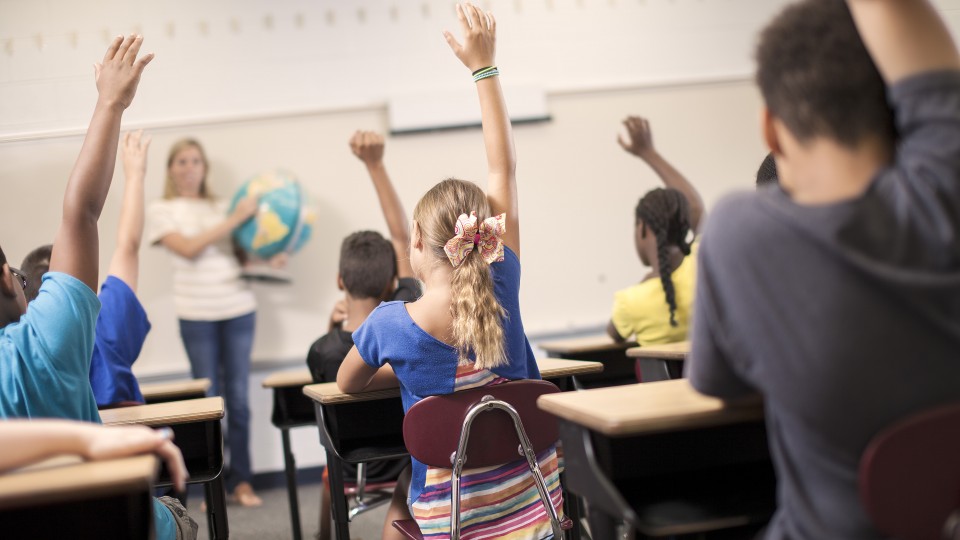How can we make public schools better?
- January 27, 2016
- / Reggie Dogan
- / education

A legendary humorist once said that public education is a lot like the weather: “Everybody talks about it, but nothing is ever done.”
Our public school system is outdated and built for an industrial age that has long passed. They say we’re now in a knowledge age, where our most valuable resource is no longer machines or the assembly line — but people.
We have problems throughout the educational system. To be sure, the system may be almost as good as it used to be, but it certainly hasn’t been improving. And everywhere else in our society, things are a lot better.
We have better cars. We have better TVs. We have bigger houses. Wherever you look, things are better, but not in education. They may be as good — maybe not as good — but the schools certainly aren’t that much better.
If our young people are going to be prepared to compete in the global economy, the realities of this new age demand that our schools are restructured to produce thinkers and problem-solvers. And that will mean ensuring that every child reaches his or her potential.
In a PBS Frontline article, Chester E. Finn Jr. was asked: “Do you think that American public education as a whole is still in crisis?”
Finn is the John M. Olin Fellow at the Manhattan Institute and president and trustee of the Thomas B. Fordham Foundation where his primary focus is the reform of primary and secondary schools.
His answer is worth taking note:
I think we're doing a pretty mediocre job as a whole. There are some beacons of quality, but they don't serve many kids. When you look at the international comparative data, and things like math and science, you discover that our best students are lagging way behind most other countries' average students in things like math and physics. You have to conclude that the suburban schools of America are not as good as they think they are. The difference is that our suburban schools are complacent and think they're fine, and the people attending them generally think they're fine. In the inner cities, people know they have a problem and are actively discontented. But I think a lot of suburban Americans are living in a kind of fantasyland.
In every city across this country, there is a huge variation in the outcomes for kids. There are some that are doing extraordinarily well, and then you have some in the same system who consistently remain on the lower rung of achievement.
As schools locally and across the country put a bigger focus on high school graduation rates and kindergarten readiness, the bigger question loom: Can schools be fixed?
Scholars, experts and advocates for K-12 education attempted to answer that question in a recent article in The Atlantic magazine.
Providing reasons for optimism and pessimism, they give cause for hope and despair:
Education is often touted as a means for boosting social mobility and making communities more equal, but inequality in school funding and resources has made that difficult to achieve, especially amid increasing poverty rates. Segregation in districts, both tacit and explicit, is holding scores of children back, and performance on math and reading assessments has remained relatively stagnant. President Obama has just signed into law an act that will replace the widely despised No Child Left Behind, but whether it’ll succeed in its goals—boosting the attainment of disadvantaged students, reducing the amount of testing taking place in schools, promoting classroom innovation, and so on—is far from guaranteed.
Read what the experts have to say in The Atlantic’s “Can Schools Be Fixed?”
 CivicCon launches with a look at good growth in cities
CivicCon launches with a look at good growth in cities
 Building stronger brains one baby, one parent at a time
Building stronger brains one baby, one parent at a time
 SCI debuts commercial on Early Learning City
SCI debuts commercial on Early Learning City
 Entrecon: World class speakers and an opportunity to sharpen skills
Entrecon: World class speakers and an opportunity to sharpen skills
 PYP Quality of Life survey 2017
PYP Quality of Life survey 2017
 EntreCon Pensacola 2016: A look back
EntreCon Pensacola 2016: A look back
 Leadership tip: getting better employee takeaways
Leadership tip: getting better employee takeaways
 Leadership tip: be interested instead of interesting
Leadership tip: be interested instead of interesting
 Leadership tip: delivering difficult messages
Leadership tip: delivering difficult messages
 Brain Bags boost Arc, Early Childhood Court programs
Brain Bags boost Arc, Early Childhood Court programs